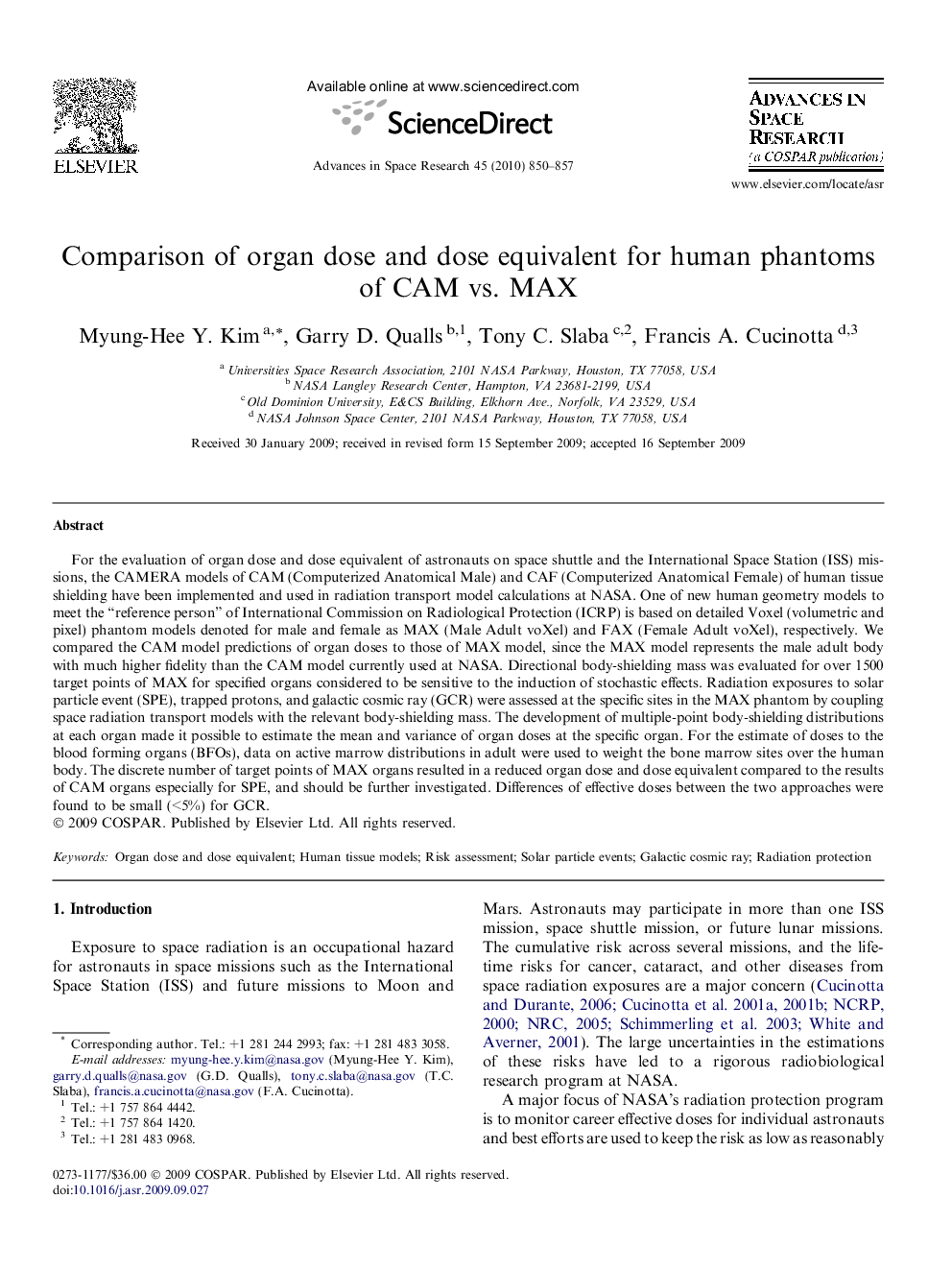| Article ID | Journal | Published Year | Pages | File Type |
|---|---|---|---|---|
| 1765818 | Advances in Space Research | 2010 | 8 Pages |
For the evaluation of organ dose and dose equivalent of astronauts on space shuttle and the International Space Station (ISS) missions, the CAMERA models of CAM (Computerized Anatomical Male) and CAF (Computerized Anatomical Female) of human tissue shielding have been implemented and used in radiation transport model calculations at NASA. One of new human geometry models to meet the “reference person” of International Commission on Radiological Protection (ICRP) is based on detailed Voxel (volumetric and pixel) phantom models denoted for male and female as MAX (Male Adult voXel) and FAX (Female Adult voXel), respectively. We compared the CAM model predictions of organ doses to those of MAX model, since the MAX model represents the male adult body with much higher fidelity than the CAM model currently used at NASA. Directional body-shielding mass was evaluated for over 1500 target points of MAX for specified organs considered to be sensitive to the induction of stochastic effects. Radiation exposures to solar particle event (SPE), trapped protons, and galactic cosmic ray (GCR) were assessed at the specific sites in the MAX phantom by coupling space radiation transport models with the relevant body-shielding mass. The development of multiple-point body-shielding distributions at each organ made it possible to estimate the mean and variance of organ doses at the specific organ. For the estimate of doses to the blood forming organs (BFOs), data on active marrow distributions in adult were used to weight the bone marrow sites over the human body. The discrete number of target points of MAX organs resulted in a reduced organ dose and dose equivalent compared to the results of CAM organs especially for SPE, and should be further investigated. Differences of effective doses between the two approaches were found to be small (<5%) for GCR.
